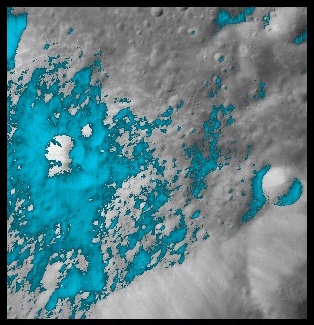
On September 24th, NASA issued a press release telling the world that water molecules had been discovered on the Moon’s surface. At CK-12 we emailed this news article to each other, and upon reading it my first reaction was that we may need to update our Earth Science FlexBook. Sure enough, we open up to the Earth, Moon, and Sun chapter and go to the Lunar Surface section, and it begins with the proclamation “The Moon has no water.” After another careful pass of the NASA “Mission News” article, I put together a couple sentences to replace this one, writing:
There are no lakes, rivers, or even small puddles anywhere to be found on the Moon’s surface. (However, it should be noted that in 2009, NASA scientists believe they discovered that in the top few millimeters of the Moon’s surface, there is a large number of water molecules mixed in with dirt and rocks — you can stay up-to-date with their latest findings at http://www.nasa.gov).

Looking at the Lunar Surface section, I recalled that the Moon had been in the news earlier this week as well. Doing a quick search, I dug up an article from September 21st about how NASA’s Lunar Reconnaissance Orbiter had recorded temperatures in permanently dark craters on the Moon that are less than -238 degrees Celsius (-397 degrees Fahrenheit). A NASA scientist claims that these are “among the lowest that have been measured anywhere in the solar system, including the surface of Pluto.” So of course I need to add a couple lines about this astonishing factoid, as well as some well-established average day and night time surface temperatures to flush out the section.
Then it dawned on me what just happened. The big picture — NASA scientists collaborate with the Indian Space Research Organization by putting equipment on India’s Chandrayaan-1 spacecraft. A global network of scientists analyze the data that Chandrayaan-1 streams to them from space. After careful and thorough analysis, they share their findings on NASA’s web site. Then, on the same day that they share their findings, we update our textbook and publish it live on our site.
Now, although we must be careful to not update our FlexBooks with every news release or claim read in the news, we can guide our readers toward good sources of information and try do our best to be honest and accurate writers, editors, and curators of knowledge. That being said, it is a great feeling to know that our Earth Science FlexBook is probably the first textbook in the world to be published with this new information about the Moon’s surface.
Notes
1. The image is of a young lunar crater on the side of the moon that faces away from Earth, as viewed by NASA’s Moon Mineralogy Mapper on the Indian Space Research Organization’s Chandrayaan-1 spacecraft. This image is a crop of the original version. Credits: ISRO/NASA/JPL-Caltech/USGS/Bro

